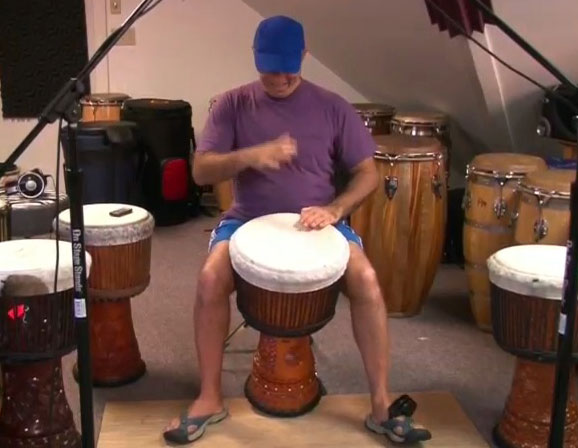In my circles of friends and in the drum scenes I partake or I am involved with I have always noticed a rush for beginners and students, people with out developed skill sets to have an “over infatuation” with soloing. I see it at every level of playing and in every style of drumming I am part of.
Maybe it’s the Buddy Rich syndrome, peoples earliest memories of drums seeing someone soloing on TV? It is a misconception that this is the heart of hand drumming. It is the heart of entertainment, of showmanship but it is not the heart of drumming.
The minute someone touches a drum for the first time they are all over the place. When is the last time you saw a beginner or someone first sitting down on a drum try to hold a steady pattern? When people sit down to play even the first time they have no concept of holding a part. Making a rhythm. A rhythm repeats. That is the nature of rhythm.
Everyone wants to be creative, to express. I understand it. I do too!
But what we all need to understand no matter what kind of drumming we do is that if we can learn to accompany each other, to support each other to hold parts and develop grooves, any playing situation be it a drum circle or or traditional session is going to be much more fulfilling. What I have learned in recording studio over the years is the simpler the better. Less is more and the use of space.
Often at jam sessions, some players will begrudgingly play accompaniment parts when really all any one wants to do is solo.
If you do not learn to fully play and understand basic accompaniment parts your solo will never really be fully developed. Because by playing accompaniment parts, (the basic simple parts and elements that make up west african and afro cuban based rhythm structures), you learn the groove. Your body learns to feel the groove. And you get the juxtaposition of hearing and feeling someone else push and pull against you.
If all you are thinking about while you hold an accompaniment part is soloing, (or taking out the garbage, or what’s for dinner) you are not going to get it either. Because you have to surrender your ego to play drums.You are no longer “the man” (or “the woman”).
There is no way around it. It’s the only way you can feel the rhythms. You can not feel when you are in your ego state.
Other wise you are trying to show what you know (ego), reciting (ego). Not sitting in the rhythm. When someone is happy playing accompaniment part it is not when they are thinking “look at me”. It when they are feeling the part, how they fit in.
It’s feeling and experiencing the big picture and being part of the chain, that links together that is the team or “village” experience.
You have to leave your ego at the door. And when you play a basic part it is a mantra. It is meditation.When you can fully make an accompaniment part sing, then you are ready to solo.And really soloing should be called playing the lead. Because the lead drum should be leading. It should be relating to the dancers and to the other drummers and the musical composition. Not off in outer space while we close our eyes.
If all you want to do is solo…you are missing the point. We are missing the groove. Drumming is about groove consciousness. It’s not about soloing in and of itself. Soloing is part of drumming its the icing on the cake. But it is not the cake itself. Soloing is “solo”. It’s me, me, me. To me hand drumming is about “we, we, we”. Those of you who have experienced the power of organized orchestrated drumming will know what Iam talking about and those that haven’t should consider being open to it.

